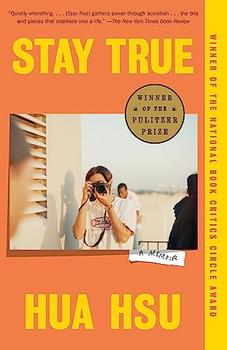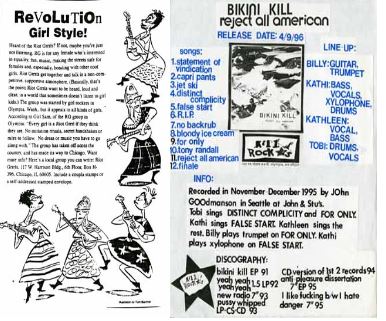Summary | Excerpt | Reading Guide | Reviews | Beyond the Book | Read-Alikes | Genres & Themes | Author Bio

A Memoir
by Hua HsuThis article relates to Stay True
 In his memoir, Stay True, Hua Hsu recalls his college years in the 1990s, including the role that zines played in the evolution of his identity: "Zines are a metaphor for life…It's your creation and your voice."
In his memoir, Stay True, Hua Hsu recalls his college years in the 1990s, including the role that zines played in the evolution of his identity: "Zines are a metaphor for life…It's your creation and your voice."
The Oxford English Dictionary defines a zine as being a short form of fanzine, a kind of amateur-produced magazine designed for fans of niche interests. Unlike a traditional glossy magazine, they are typically made cheaply, photocopied and stapled together or folded like a pamphlet. In keeping with their DIY nature, they can also be glued, taped, or sewn. A zine's circulation is usually small — they are often disseminated to fewer than 1,000 readers. Zines offer unfiltered perspectives and their aesthetic is homespun, testament to the unique creativity of their makers.
The zine is the perfect medium for underrepresented voices and subcultures, and those rebelling against authority. Believed to have originated in the 1930s for fans of science fiction, the zine has existed in other forms for a lot longer if one considers the political pamphlet as an early iteration. In 1776, Thomas Paine's self-published Common Sense was dispersed, advocating America's independence from Great Britain. In the 1830s, the American Anti-Slavery Society produced wood-printed abolition pamphlets to generate support for their cause. Le Libertaire, a paper co-founded by anarchist Sébastien Faure during the French Revolution, embodied the spirit of resistance.
The modern version of the zine form found its zenith in the 1990s, a natural progression from its popularity in the punk scene of the 1970s. The growth of copy shops meant that zines could be reproduced easily and fairly cheaply by the 90s, and this coincided with the rise of riot grrrl, an underground feminist movement and punk subgenre that originated in Olympia, Washington and went on to establish chapters across North America, Europe and Asia. The zine provided the perfect vehicle for disseminating information and ideas related to riot grrrl music and activism. Kathleen Hanna, lead singer of the band Bikini Kill, released a zine manifesto, also called Bikini Kill, which lays out various ways of fostering creative expression among girls and women and fighting sexism. Despite its influence, the movement received criticism for being primarily white and middle class, which led to the birth of some noteworthy punk zine compilations by people of color in response, such as Evolution of a Race Riot, Race Riot 2 and How to Stage a Coup.
The zine remains popular, and the transition from print to digital means that activists and creatives can spread their work more easily and have wider range. Current hot topics include health and wellness, Black Lives Matter and prisoners' rights (reflected in Tenacious, a zine penned by incarcerated women and compiled by Victoria Law). Many zines are now available online, and branches of the Quimby's book store in New York and Chicago specialize in in zines.
Riot grrrl zines, courtesy of The Rock & Roll Hall of Fame
Filed under Cultural Curiosities
![]() This "beyond the book article" relates to Stay True. It originally ran in November 2022 and has been updated for the
September 2023 paperback edition.
Go to magazine.
This "beyond the book article" relates to Stay True. It originally ran in November 2022 and has been updated for the
September 2023 paperback edition.
Go to magazine.
A library is thought in cold storage
Click Here to find out who said this, as well as discovering other famous literary quotes!
Your guide toexceptional books
BookBrowse seeks out and recommends the best in contemporary fiction and nonfiction—books that not only engage and entertain but also deepen our understanding of ourselves and the world around us.